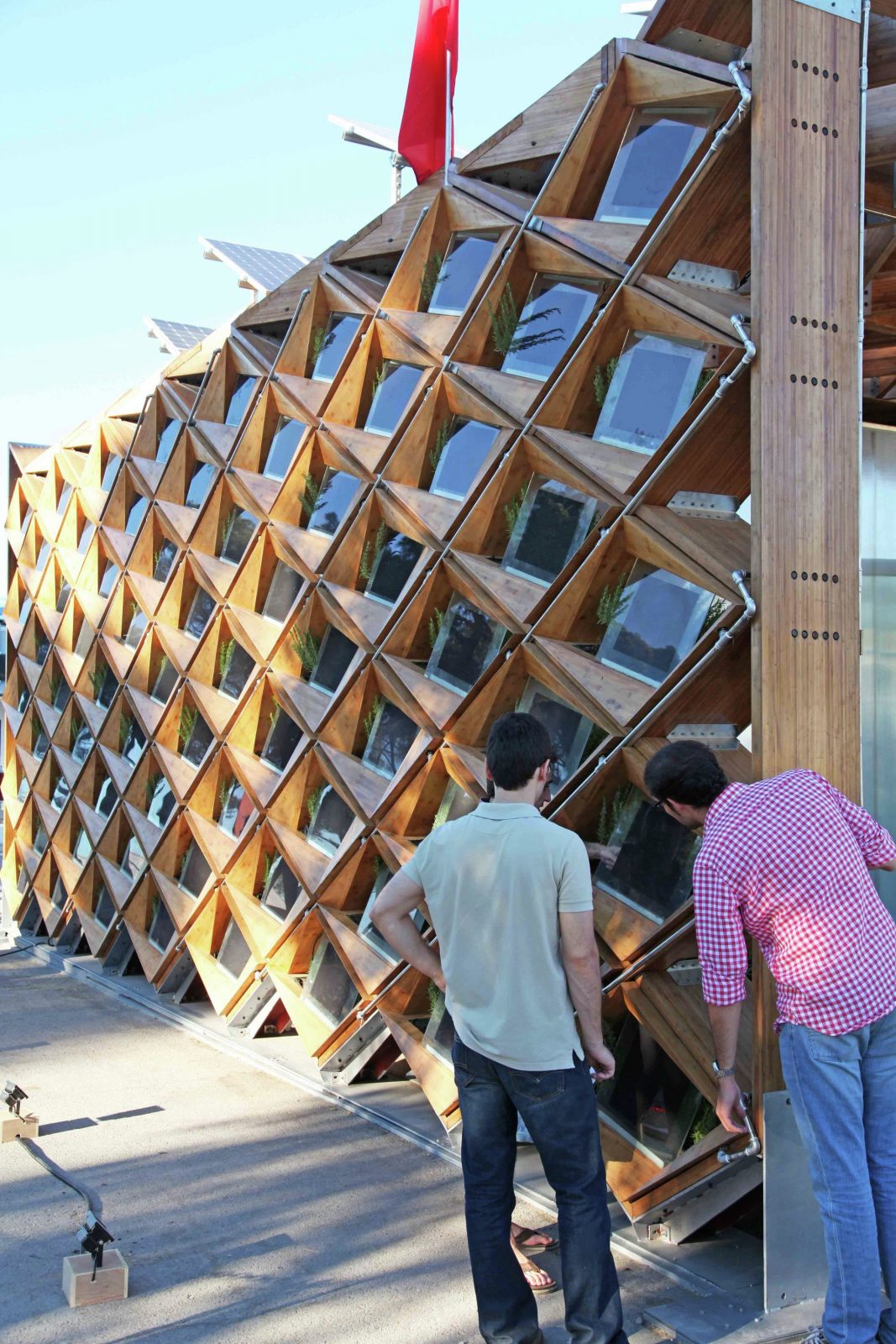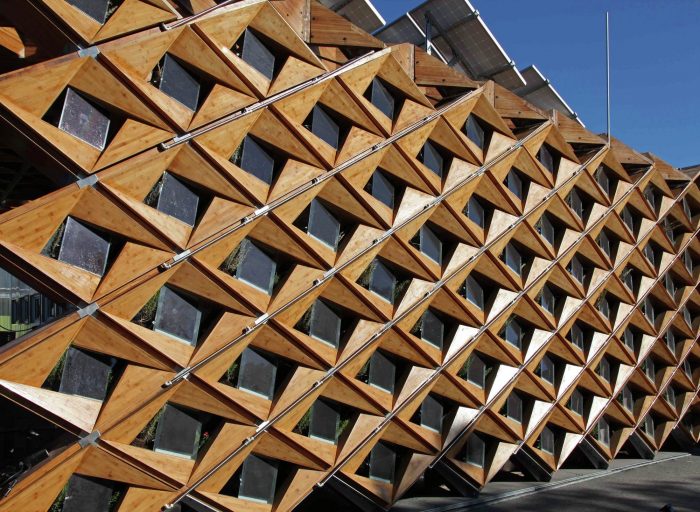Para Eco House
Architecture students of Tongji University, China, created Para Eco-House for Europe’s Solar Decathlon 2012 – one of the most renowned international architecture competitions focused on energy efficiency. The contest is a research ground for students and young professionals dedicated to the same cause: sustainable architecture. In 2012, the competition took place in Madrid, Spain, and gathered 18 teams. As the jury states, choosing the winners was not easy, as each project had unique qualities. Although the Tongji team did not win, Para Eco-House left an imprint with its parametric design and the use of bamboo, a cheap and renewable material.
The Chinese team implemented traditional Daoist principles along with contemporary ones in order to achieve energety independence and sustainability. Thus, Para Eco-House combines both passive and active systems. A set of 42 solar panels is used to maximize efficiency and a water recovery system covers all household utilities. The shell of the house is well-insulated, with triple glazed windows, a roof topped with vegetation, a natural ventilation system and a parametric bamboo outer-layer wrapping the core, or the “living box”, as Jia Dongfang of the Tongji Team refers to the inner living space.
Para Eco-House is also interesting due to its modular architecture. The house consists of longitudinal 1,2 meters modules which can be added to extend the space. These can also be slid to create interesting inner-outer relations.
With climate problems now more pressing than ever, sustainable planning seems to be the only path for the future of architecture. At Solar Decathlon, architecture students got a chance to learn about sustainable principles and collaborate to design and build their innovative projects.
Video Courtesy of Solar Decathlon Europe
Designed by: the Tongji University Team
By: Ana Cosma
Edited by: Zeynab Matar





























